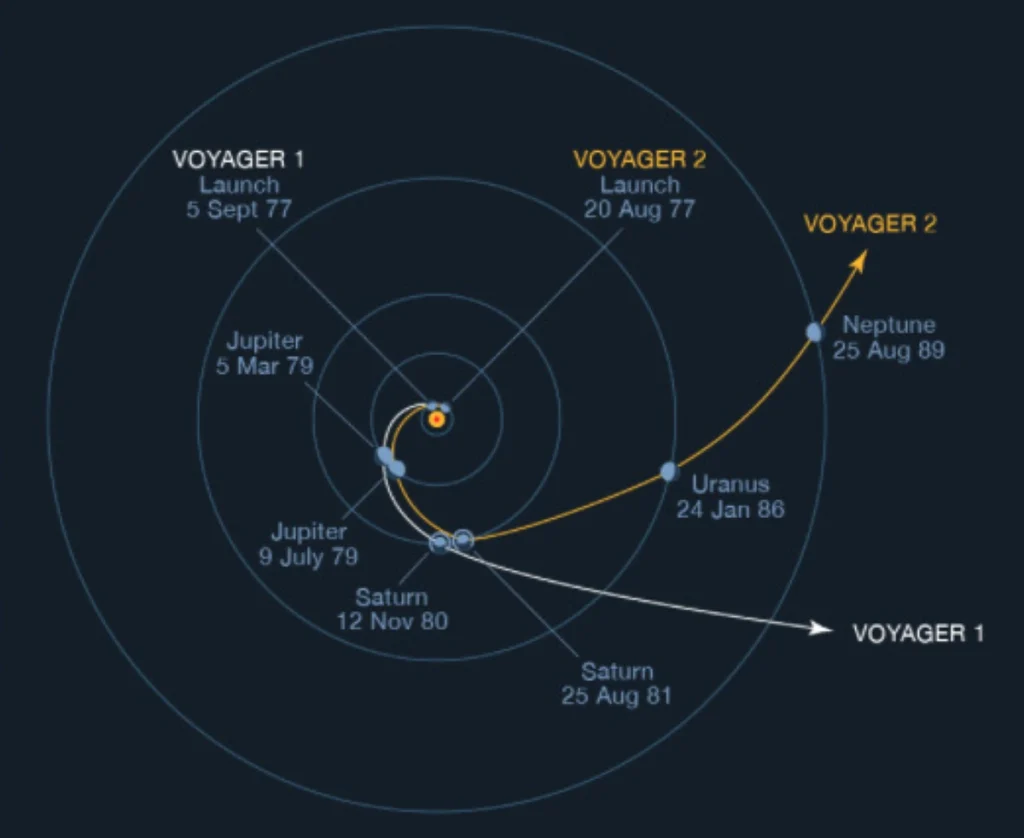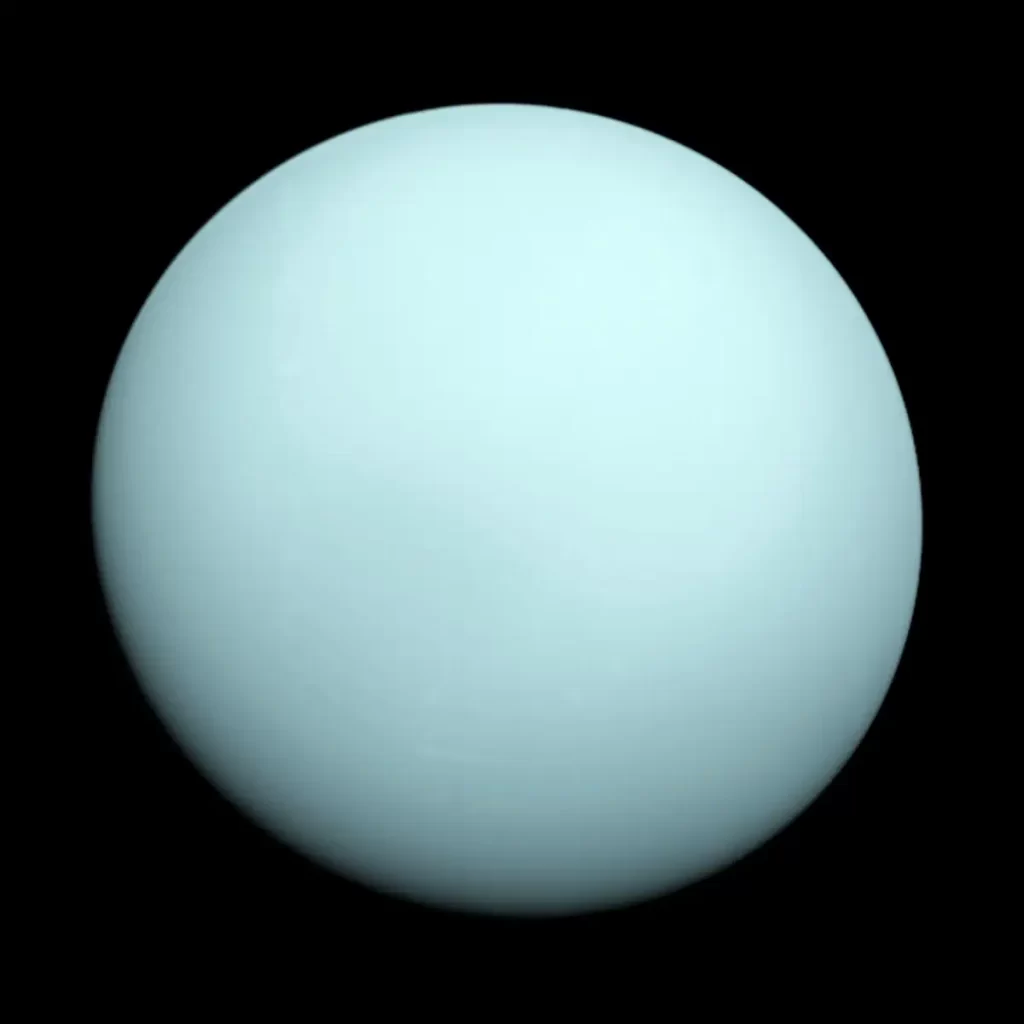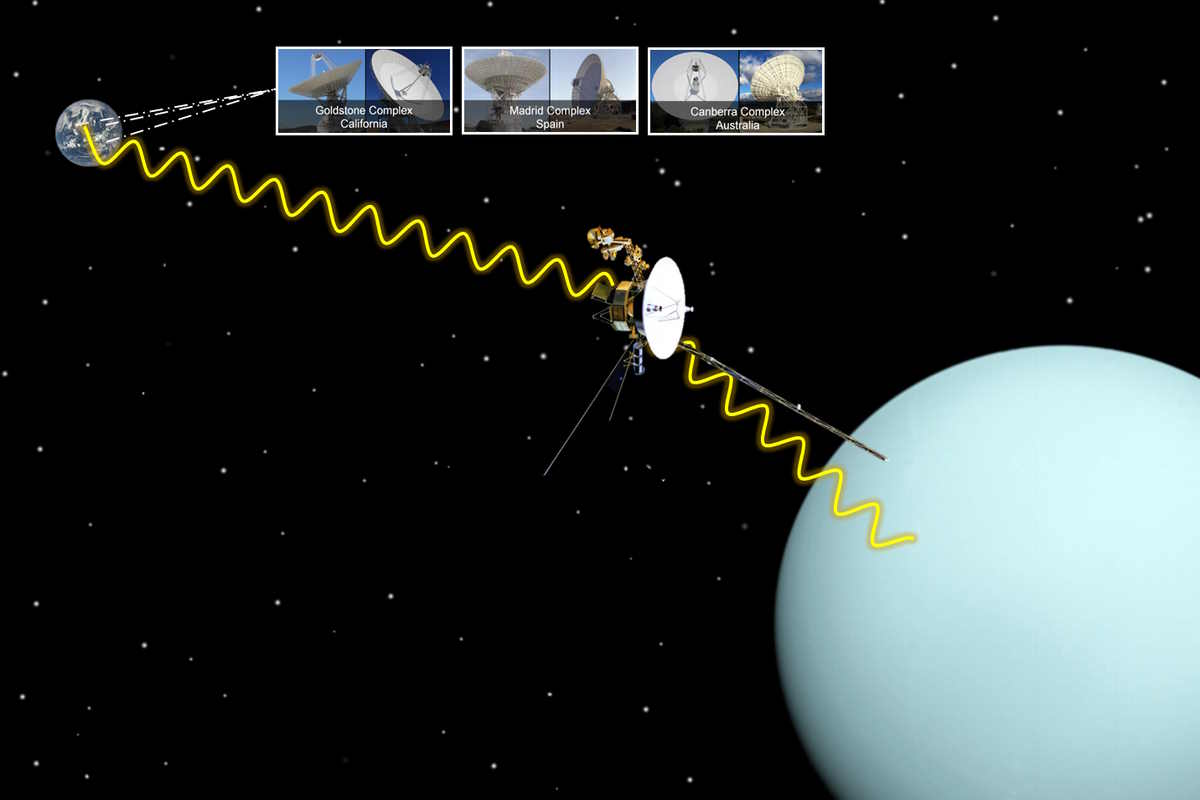On January 24, 1986, NASA’s Voyager 2 spacecraft performed the first (and as of 2023, the only so far) Uranus flyby in the history of space exploration.
January 24 story of what happened this day in Science, Technology, Astronomy, and Space Exploration history.
Voyager 2 at Uranus: the first (and so far, only) Uranus flyby in the history
Like its twin Voyager 1, the Voyager 2 spacecraft’s mission was to study the outer planets of the Solar System (Jupiter, Saturn, Uranus, and Neptune) and interstellar space beyond the Sun’s heliosphere (the magnetosphere and the outermost atmospheric layer of the Sun, the heliosphere is regarded as the border of the Solar System).
Voyager 2 was launched on August 20, 1977. It performed a Jupiter flyby on July 9, 1979, and a Saturn flyby on August 26, 1981.

Then, on November 4, 1985, Voyager 2 started the Uranus observation phase of its solar system “grand tour”.
At the time of the Voyager encounter, Uranus had five known moons (today it has 27 known moons) and a set of dark rings which was first observed the year the spacecraft left Earth.
On December 30, it discovered its first new moon (of Uranus), named “Puck”, which is name follows the convention of naming Uranus’s moons after characters from Shakespeare.
Astronomers had named the moons, in order of distance from the planet, Miranda, Ariel, Umbriel, Titania, and Oberon, after characters in works by William Shakespeare and Alexander Pope.
On January 24, 1986, Voyager 2 performed flybys of Uranus’ moons Miranda, Ariel, Umbriel, Oberon, and Uranus, the mysterious planet itself. The closest approach during the Uranus flyby was 81,500 kilometers (about 50,000 miles).

Because of Uranus’ great distance from the Sun, engineers made changes to Voyager’s imaging techniques to accommodate light levels of only 25% of what they were during the Saturn encounter. Engineers programmed image motion compensation techniques into Voyager 2’s computer to maintain clear photographs at the required 15-second exposure times coupled with the spacecraft’s velocity.
NASA also upgraded the ground-based tracking antennas of the Deep Space Network to increase their sensitivity to receive Voyager 2’s signals from Uranus’ distance.
Voyager 2 radioed thousands of images and voluminous amounts of other scientific data on the planet, its moons, rings, atmosphere, interior, and the magnetic environment surrounding Uranus.
Voyager 2’s images of the five largest moons around Uranus revealed complex surfaces indicative of varying geologic pasts. Several instruments studied the ring system. The spacecraft also found a Uranian magnetic field that is both large and unusual. In addition, the temperature of the equatorial region, which receives less sunlight over a Uranian year, is nevertheless about the same as that at the poles.
Voyager 2 also discovered 11 previously unknown moons: Cordelia, Ophelia, Bianca, Cressida, Desdemona, Juliet, Portia, Rosalind, Belinda, Puck, and Perdita.
The length of a day on Uranus as measured by Voyager 2 is 17 hours and 14 minutes.
On February 25, Voyager 2’s Uranus observation phase finished. 3.5 years later, it would visit Neptune.
Sources
- “Voyager 2 Explores Uranus” on the NASA Radioisotope Power Systems website
- “Images Voyager Took of Uranus” on the NASA Jet Propulsion Laboratory website
- Uranus Approach on the NASA Jet Propulsion Laboratory website
- Voyager 2 Explores Uranus on the NASA website
- Voyager 2 on Wikipedia
- Moon Landings: All-Time List [1966-2025] - February 2, 2025
- What Is Max-Q and Why Is It Important During Rocket Launches? - January 16, 2025
- Top 10 Tallest Rockets Ever Launched [2025 Update] - January 16, 2025
